What Is the Most Expensive Stone on Earth

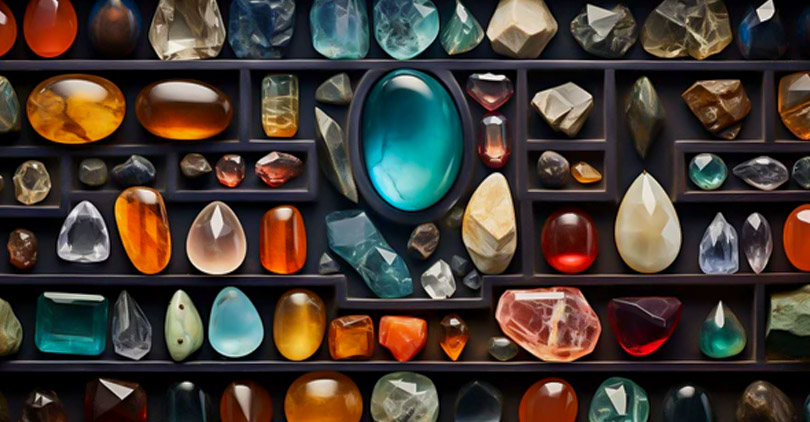
Gemstones, with their rareness, beauty, and luster, have fascinated people for centuries. Throughout history and still today, they are worn as symbols of wealth and rank.
The world of jewelry and investment has always been interested in expensive gemstones – because they are so rare, because they have unusual properties, or because they are simply better examples than others out there.
Whether it's diamonds such as rubies, sapphires, and emeralds, each possesses its own particular appeal. Understanding what makes a gemstone valuable allows you to marvel at the skill and effort involved in making pieces of jewelry out of it.
Come with us on this magical journey through the costliest gems on Earth. Together, we will discover some treasures that truly defy description!
Understanding Gemstones
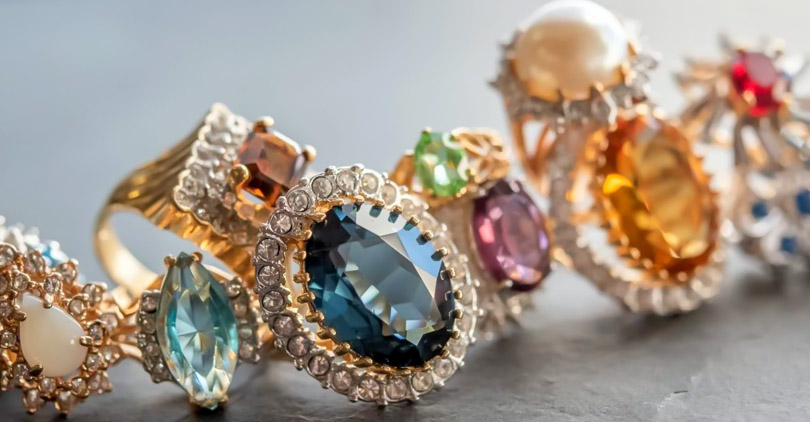
Gemstones are minerals that have been cut, polished, and used in jewelry or decorative items. They can be natural or man-made or even made from plants or animals.
People love them because they come in beautiful colors and patterns and shine bright when polished – perfect for jewelry!
For example, you might see blue sapphires sparkling next to red rubies and green emeralds on a necklace. You may also observe beautiful pearls, perfectly set earrings, bracelets, necklaces, or rings. Gems make any piece of jewelry special!
The Four Cs: Cut, Color, Clarity, and Carat
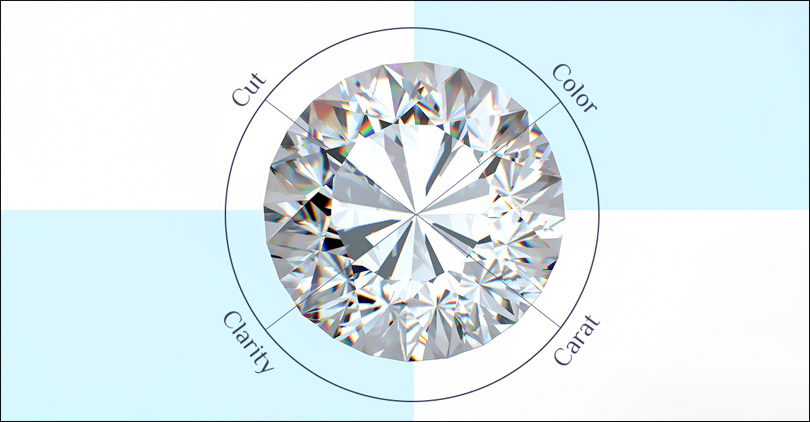
When determining the worth of a gemstone, experts consider its Cut, Color, Clarity, and Carat weight - the Four Cs. These aspects are instrumental in gauging overall quality and desirability:
· Cut: How well a gem has been shaped and faceted greatly affects how brilliantly it shines. A superior cut maximizes light reflection.
· Color: Of utmost importance when assessing value, vibrant hues without tints or tones command higher prices. Think rich blue for sapphires or intense grassy green for emeralds.
· Clarity: Nobody wants a flawed jewel - whether on the surface (blemishes) or internally (inclusions). Stones with fewer flaws allow more light to pass through. Hence, they're worth more.
· Carat: Gem size counts here. Bigger ones are rarer - and usually pricier by default. But don't forget the other three factors also play heavily into what something is worth!
Rarity and Origin
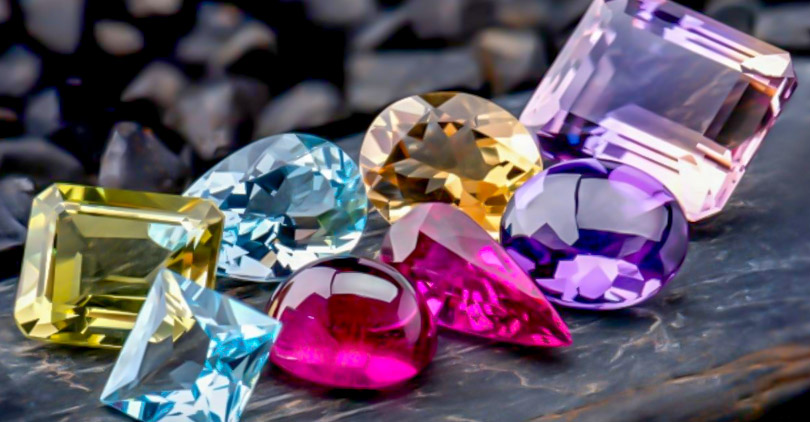
The rarity of a gemstone is important for determining its worth. Some gemstones, like diamonds, are not actually rare but are marketed as if they are. Others, such as alexandrite or certain types of opals, really are rare and can, therefore, be sold at higher prices.
Where a gem comes from can also make it more valuable. For example, rubies from Burma and emeralds from Colombia are highly prized because they tend to be of better quality than those from other places. Plus, there is often demand for gems with an interesting historical story behind them!
The Most Expensive Gemstone: Blue Diamond
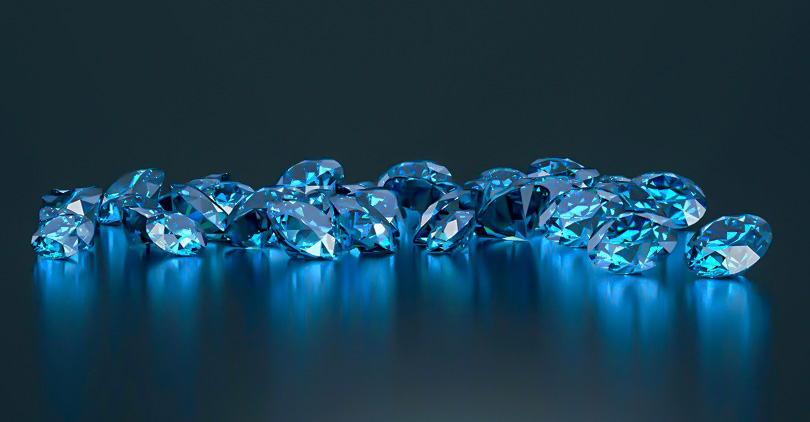
The blue diamond is considered the highest form of luxury and scarcity in the gemstone industry. Its mesmerizing blue color and unmatched worth make it the most expensive type of this precious stone available today.
Blue diamonds have captivated both jewelry makers and collectors, who are willing to pay astronomical sums for them – seeing these gems as nothing less than pure refinement and being one-of-a-kind.
Description of Blue Diamond

Blue diamonds get their mesmerizing blue hue from boron atoms present in the crystals. These atoms absorb red, green, and yellow light and reflect blue light, giving them a beautiful blue color. The more intense this color is, the rarer and more valuable the diamond becomes.
Most blue diamonds come from the Cullinan Mine in South Africa, where some of the best diamonds on Earth have been found – including the Hope Diamond!
The Price Tag of Blue Diamond
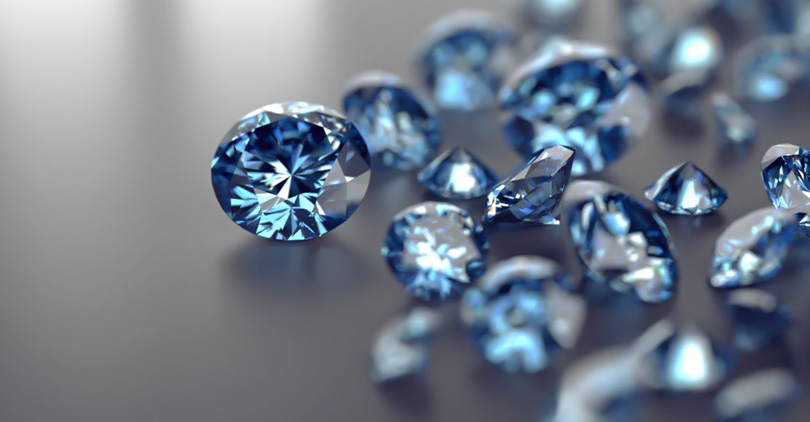
Blue diamonds are both rare and very valuable— in fact, they hold the record for being the most expensive gemstone per carat. To give an idea of just how pricey they can be, one carat alone might fetch $3.93m.
It's no wonder then that people who collect rare gems or investors looking for a big return clamor for them.
A testament to their worth came in 2015 when a 12.03-carat blue diamond called The Blue Moon of Josephinesold at auction for $48.4m. That's more than some people pay for private jets!
Uses of Blue Diamond in Jewelry and Its Significance
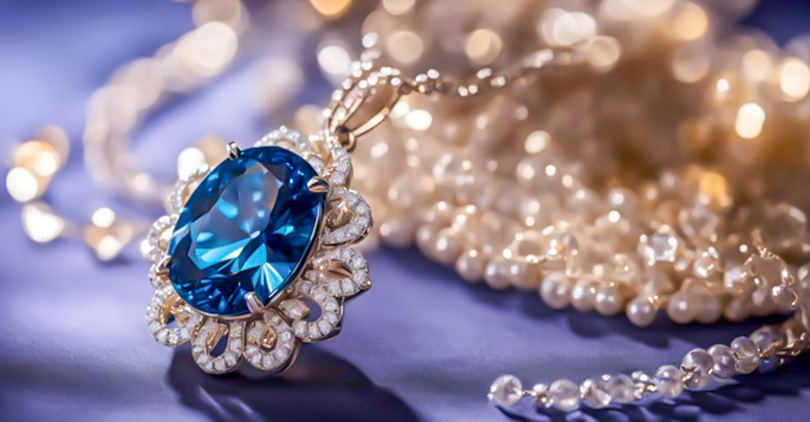
In the world of fine jewelry, blue diamonds reign supreme. When it comes to crafting exquisite rings, necklaces, and earrings that really catch the eye, only these stones will do.
Their unique sparkle makes them perfect for exclusive designs aimed at wealthy customers who want to stand out from the crowd. But there's more to blue diamonds than looks alone – they also have important meanings rooted in history and culture.
Take the Hope Diamond as an example of this. Surrounded by myth and mystique, some people believe owning it can bring good luck – while others think it's more likely to make things go wrong for you!
Other Expensive Gemstones
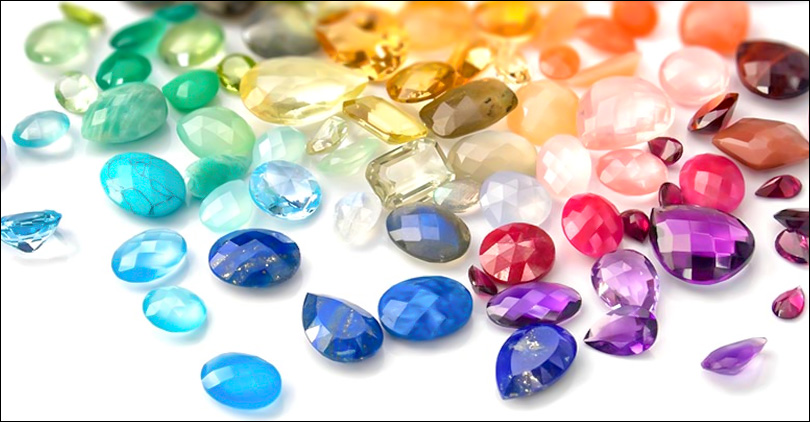
Besides the famous blue diamond, there are many other precious gemstones that are both rare and valuable. Tanzanite, black opal, red beryl, and musgravite all earn high prices for their beauty and special qualities – and because there aren't many of them around.
Each one provides a window into the marvels of Earth's geology. As such, they have a big following among people who love gems or enjoy collecting them.
Tanzanite: The Exotic Blue-Violet Gem
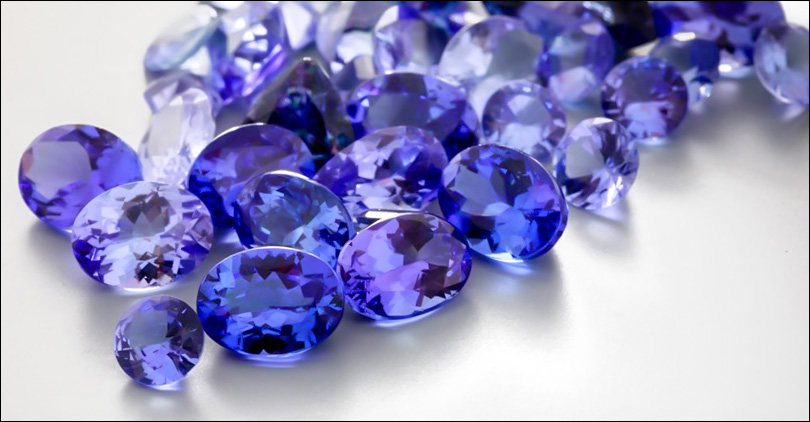
If you adore beautiful gems, then tanzanite is one stone you simply cannot overlook. This precious gemstone, which can only be found in Tanzania, hence the name tanzanite, is rare and unusual with its intense blue-violet color.
A variety of zoisite minerals, such as tanzanite, were not discovered until the 1960s. The presence of vanadium within the stone is responsible for its vibrant coloration. Formed by metamorphic processes (heat and pressure) within rocks, this gem is highly coveted for jewelry purposes.
Tanzanite jewelry designers enjoy working with this versatile gem. When they are cut into different shapes, they can beautifully reflect sapphire blue or deep violet – sometimes appearing to change colors when viewed under varying lights!
All tanzanite in the world comes from a very small area near Mount Kilimanjaro. Thus, they are rare and valuable and may be sold for up to $1,200 per carat!
Black Opal: The Mystical Gem
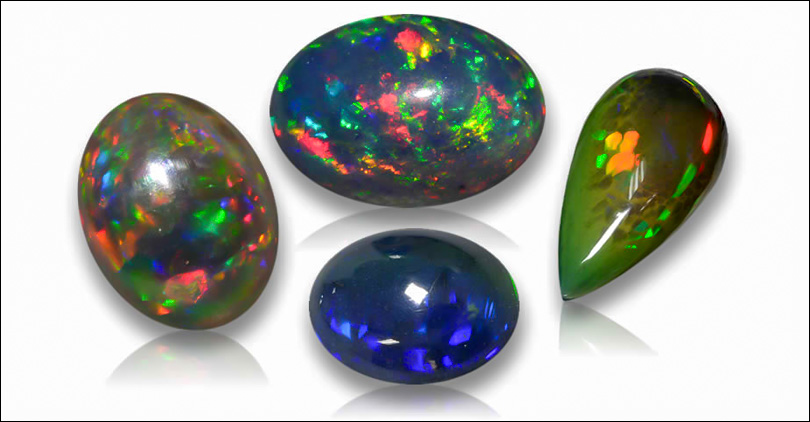
Black opal is a type of opal that is considered the rarest and most precious. It has a dark tone body, which makes the internal play-of-color even more vibrant than usual.
Black opals are found only in Lightning Ridge area, Australia and have a unique rainbow-like hue: reds and oranges mix with blues, greens and others colours in between. This beautiful stone reflects light thanks to microscopic silica spheres – this is called opalescence.
Formed millions of years ago when silica-rich gel became trapped in rocks under an ancient inland sea, black opals are used primarily as settings for jewelry. Depending on quality factors such as size, clarity, pattern, and color intensity, the price can range up to $10,000 per carat.
Red Beryl: The Rare Crimson Gem
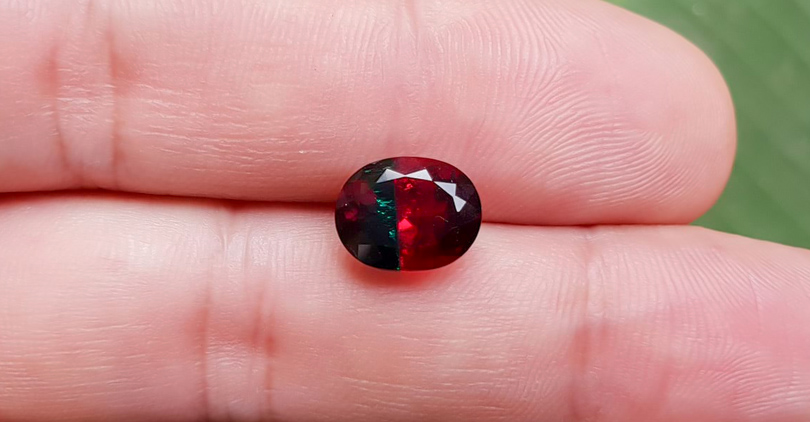
Red beryl, which can also go by the name bixbite or red emerald, qualifies as exceptionally uncommon. You will mainly locate this precious stone type in Utah's Wah Wah Mountains.
The near-neon red color comes from trace amounts of manganese. It forms inside rhyolitic volcanic rocks when the right elements combine under ideal conditions – which explains why you don't see red beryl every day!
Collectors crave this gem, and jewelry crafted with it counts as high-end. How much? Try up to $10,000 per carat for top material at retail. Supply is extremely limited. There may not be a single gem-quality red beryl available for sale at any given moment.
Musgravite: The Ultra-Rare Gem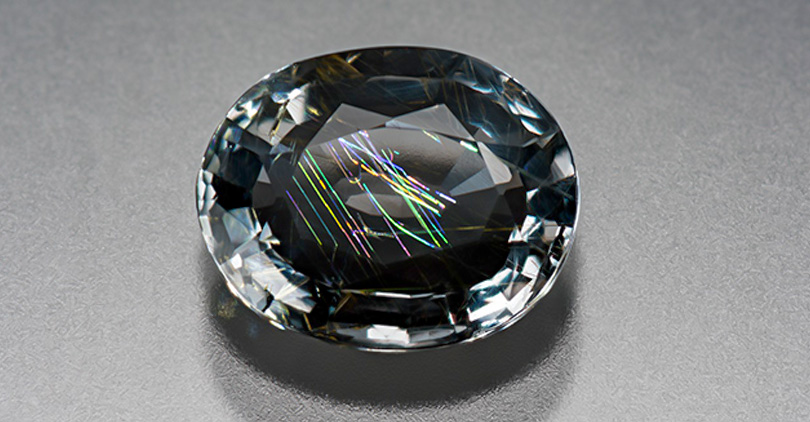
Musgravite is a gemstone that is considered to be one of the rarest in the world. It was first discovered in the Musgrave Ranges, Australia. The color range for this gemstone is diverse. Examples include greenish gray or grayish green as well as purplish gray – and sometimes even lacking any hue whatsoever!
This gem forms under unusual geological conditions and can be found in granite as well as metamorphic rocks.
Because it is so rare and comes in such beautiful colors, musgravite fetches high prices among people who collect gems or create jewelry from them. In fact, some pieces have sold for up to $35k per carat because there wasn't much available, but lots of folks wanted some anyway!
Common Misconceptions: Diamonds
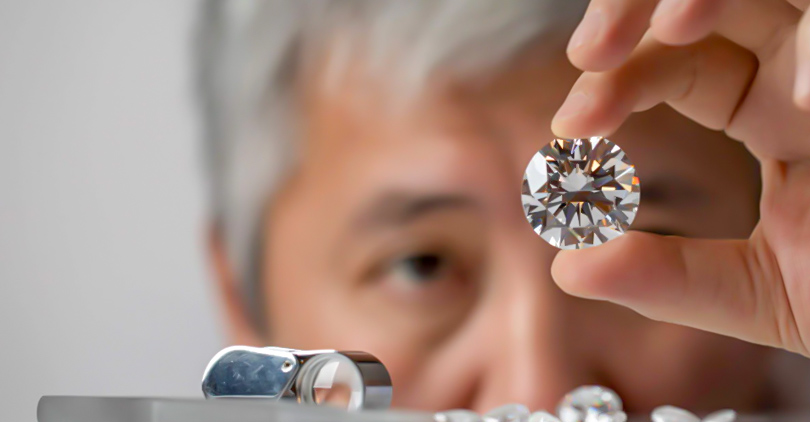
For some time now, diamonds have been promoted as the ultimate symbol of luxury and prosperity, leading people to think they are the most expensive type of gemstone. This is not true: although diamonds can be very expensive – especially high-quality ones that weigh a lot – they do not top the list.
There are several types of gemstones which cost more than diamonds because they are rare or possess characteristics that make them unique. One example is the blue diamond, which can sell for up to $3.93m per carat.
Other mentioned examples include red beryl (up to $10,000 per carat), musgravite (up to $35,000 per carat) – one of the rarest gemstones in existence – and black opal (up to $10,000 per carat) because of its vibrant play-of-colors.
The idea that diamonds are the priciest gemstone is mostly because marketing has been so effective—and everyone knows about them. In truth, the world of gemstones is incredibly diverse, and there are many others that are worth more money because they are rarer or even just more stunning.
Conclusion
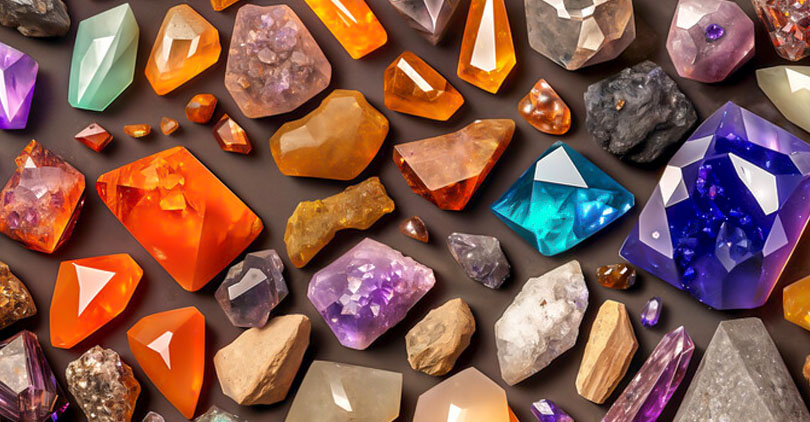
You might know diamonds are beautiful and expensive. But have you heard of tanzanite, black opal, red beryl, or musgravite? These gemstones, all rarer and pricier than diamonds, have fascinating stories to tell –– about how they formed over millennia and the craftspeople who bring out their beauty.
Learning about them will take you deeper into a world of wonder than the one most people see when they gaze at diamond jewelry in a store window.
And who knows? You may even decide to buy some, either as an investment or just because they're drop-dead gorgeous. Welcome to the amazing world of the Earth's most valuable natural wonders!


Leave a Comment